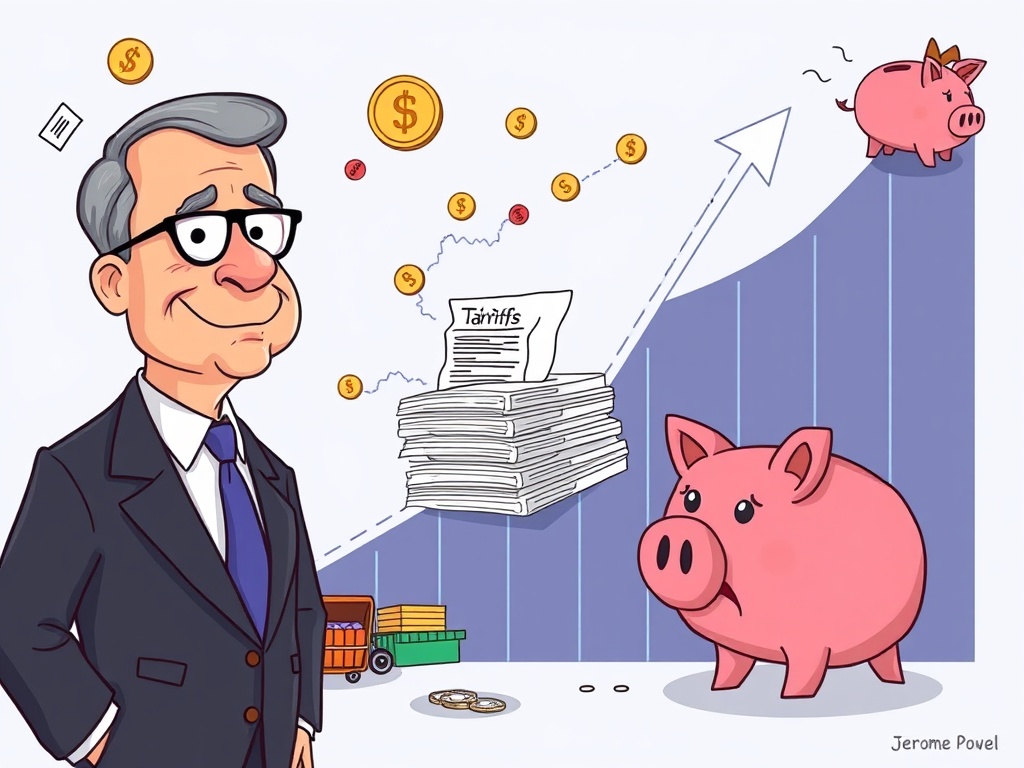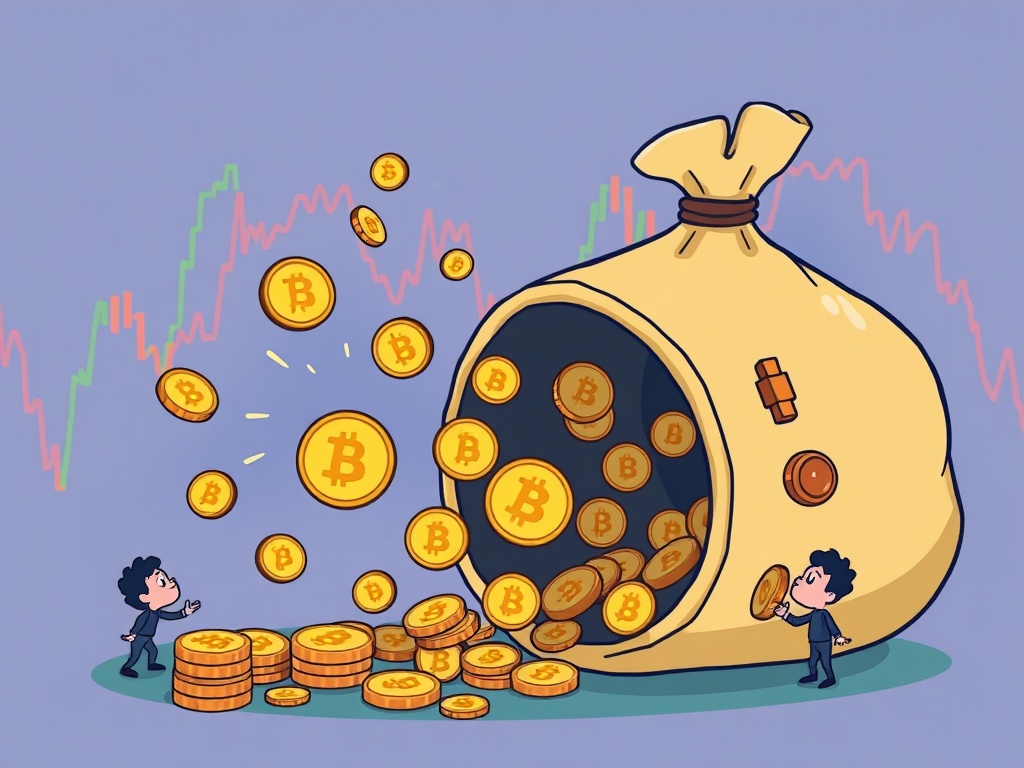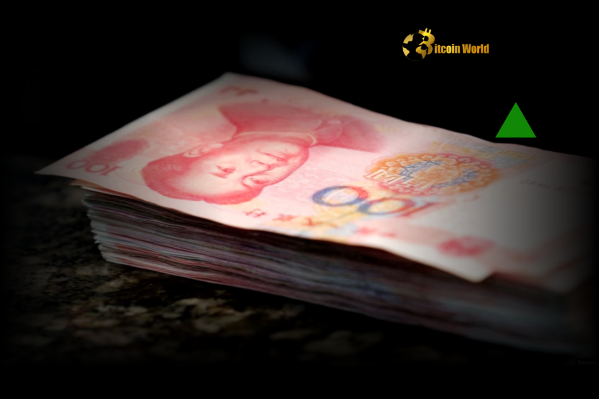BitcoinWorld

Understanding Core Inflation: Powell’s Alarming Warning on Tariff Impact
In the dynamic world of global finance, understanding the forces that shape our economy is paramount, especially for those navigating the volatile waters of cryptocurrency and traditional markets alike. When central bank leaders speak, the world listens, as their words often offer crucial insights into the economic landscape. Recently, Federal Reserve Chair Jerome Powell delivered a significant statement that sheds light on a major contributor to rising prices: tariffs. This revelation highlights the often-underestimated role of trade policy in influencing the very fabric of our financial stability and the relentless pressure on core inflation.
What is Core Inflation and Why Does It Matter?
Before diving into Chairman Powell’s remarks, it’s essential to grasp what core inflation truly represents. In simple terms, it’s a measure of inflation that excludes certain volatile price categories, primarily food and energy. These categories are often subject to sudden and unpredictable swings due to factors like weather events, geopolitical tensions, or supply chain disruptions.
Economists and policymakers, including the Federal Reserve, pay close attention to core inflation because it’s considered a more accurate indicator of underlying price trends in the economy. By stripping away the noise from temporary price shocks, core inflation provides a clearer picture of sustained price pressures, allowing central banks to make more informed decisions about monetary policy, such as interest rate adjustments. A persistent rise in core inflation suggests that price increases are becoming broad-based and entrenched, posing a greater challenge to economic stability.
Jerome Powell’s Alarming Revelation: Tariffs and Core Inflation
In a candid statement, Federal Reserve Chair Jerome Powell revealed that tariffs are responsible for a substantial portion of the nation’s core inflation, estimating their contribution to be between 30% and 40%. This is an alarming figure that underscores the profound, yet often overlooked, economic consequences of trade barriers. Powell’s direct acknowledgment highlights that these trade policies are not merely abstract geopolitical tools but have tangible, measurable impacts on the prices consumers pay every day.
For context, if core inflation is running at, say, 3%, Powell’s statement implies that tariffs alone could be adding nearly a full percentage point to that figure. This significant contribution makes it harder for the Federal Reserve to achieve its price stability mandate, as tariffs act as a persistent upward force on prices, independent of monetary policy levers. This admission from the head of the world’s most influential central bank provides a stark reminder of the intricate connections between trade, politics, and everyday economic realities.
How Do Tariffs Fuel Price Pressures?
The mechanism by which tariffs contribute to core inflation is multifaceted and involves several economic pathways. Understanding these pathways helps to illuminate the ‘how’ behind Powell’s statement:
- Increased Import Costs: When a country imposes tariffs on imported goods, it’s essentially a tax on those goods. Importers typically pass these additional costs onto domestic businesses, which then pass them onto consumers in the form of higher retail prices. This direct cost increase is a primary driver.
- Supply Chain Disruptions: Tariffs can force companies to re-evaluate their global supply chains, seeking alternative, often more expensive, sources for materials and components. This restructuring can lead to inefficiencies and increased production costs, which are ultimately reflected in consumer prices.
- Reduced Competition: By making imported goods more expensive, tariffs can reduce competition for domestic producers. While this might initially seem beneficial for local industries, it can also remove the incentive for these domestic companies to keep their prices low, as they face less pressure from foreign competitors.
- Retaliatory Tariffs: When one country imposes tariffs, others often retaliate with their own. This can harm export-oriented industries, leading to reduced sales and potentially higher prices for domestic consumers if local supply becomes constrained or more expensive.
These interconnected effects create a cascading impact throughout the economy, pushing up prices not just for the directly tariffed goods but for a wide array of products and services that rely on them.
The Ripple Effect: Beyond Direct Costs
The impact of tariffs extends far beyond the immediate increase in import prices. Their influence on core inflation creates a broader ripple effect across the economy, affecting businesses, consumers, and overall economic stability.
For businesses, higher input costs due to tariffs can squeeze profit margins, forcing them to either absorb the costs (reducing profitability) or pass them on to consumers (contributing to inflation). This uncertainty can also deter investment and expansion plans, slowing economic growth. Businesses might delay hiring or even consider layoffs if their operational costs become unsustainable.
Consumers bear the brunt of these effects through reduced purchasing power. As prices for goods and services rise, the same amount of money buys less, effectively eroding household budgets. This can lead to shifts in consumer spending habits, prioritizing necessities over discretionary items, which in turn can impact various sectors of the economy.
Moreover, tariffs can foster an environment of economic uncertainty. Businesses and consumers alike become hesitant to make long-term financial commitments when the future cost of goods and the stability of supply chains are unpredictable. This uncertainty can dampen overall economic activity and make the Federal Reserve’s job of managing price stability and employment even more challenging.
Navigating Economic Headwinds: What Does This Mean for Your Finances?
Jerome Powell’s candid assessment of tariffs’ contribution to core inflation serves as a crucial reminder for individuals and investors to remain vigilant and adaptable in their financial strategies. Understanding these economic headwinds is key to making informed decisions.
For consumers, this insight reinforces the importance of diligent budgeting and seeking value. As prices for everyday goods and services remain elevated, being mindful of spending and exploring alternatives can help mitigate the impact on household finances. This might involve looking for sales, buying in bulk, or re-evaluating discretionary expenses.
For investors, particularly those in the cryptocurrency space who often seek hedges against traditional market volatility, the persistent pressure from tariffs on inflation highlights the importance of diversification. While no investment is immune to broader economic forces, understanding how different asset classes react to inflationary environments can guide portfolio adjustments. Assets that traditionally perform well during periods of rising inflation, such as certain commodities or real estate, might warrant consideration. Staying informed about global trade policies and their potential economic fallout becomes as crucial as monitoring market trends.
Conclusion
Jerome Powell’s statement on tariffs’ significant contribution to core inflation is a powerful reminder of how interconnected global trade policy is with our daily economic realities. Accounting for up to 40% of core inflation, tariffs are not just a political tool but a direct and substantial driver of price pressures impacting businesses and consumers alike. As we navigate a complex economic landscape, understanding these underlying forces is paramount. This insight from the Federal Reserve Chairman underscores the ongoing challenges in achieving price stability and highlights the need for a comprehensive approach to economic policy that considers all factors influencing inflation.
Frequently Asked Questions (FAQs)
What is the primary role of the Federal Reserve?
The Federal Reserve, often called the Fed, is the central banking system of the United States. Its primary roles include conducting monetary policy to maximize employment and maintain stable prices (control inflation), supervising and regulating banks, and maintaining the stability of the financial system. Jerome Powell is the current Chair of the Federal Reserve Board of Governors.
How do tariffs specifically increase consumer prices?
Tariffs are taxes on imported goods. When these taxes are imposed, the cost of importing goods increases. Importers and retailers then typically pass these higher costs onto consumers through increased prices for the products they sell. This direct cost transfer is a major reason why tariffs contribute to inflation.
Why does the Federal Reserve focus on core inflation?
The Federal Reserve focuses on core inflation because it provides a clearer signal of long-term price trends. By excluding volatile components like food and energy, which can fluctuate wildly due to temporary factors, core inflation offers a more stable and reliable measure of underlying inflationary pressures, helping the Fed make more accurate policy decisions.
Can tariffs ever be beneficial for an economy?
Proponents of tariffs argue they can protect domestic industries from foreign competition, encourage local production, and potentially create jobs within the country. However, economists widely debate these benefits, often pointing out that they come at the cost of higher prices for consumers, reduced trade, and potential retaliatory measures from other countries, which can harm overall economic growth.
What is the difference between inflation and core inflation?
Inflation is the general increase in prices and fall in the purchasing value of money. Core inflation is a specific measure of inflation that excludes the volatile categories of food and energy prices. While inflation provides an overall picture of price changes, core inflation offers a more stable indicator of underlying price trends, preferred by central banks for policy-making.
If you found this article insightful, please share it with your friends, family, and network on social media. Your shares help us spread crucial economic understanding to a wider audience!
To learn more about the latest crypto market trends, explore our article on key developments shaping Bitcoin price action.
This post Understanding Core Inflation: Powell’s Alarming Warning on Tariff Impact first appeared on BitcoinWorld and is written by Editorial Team





